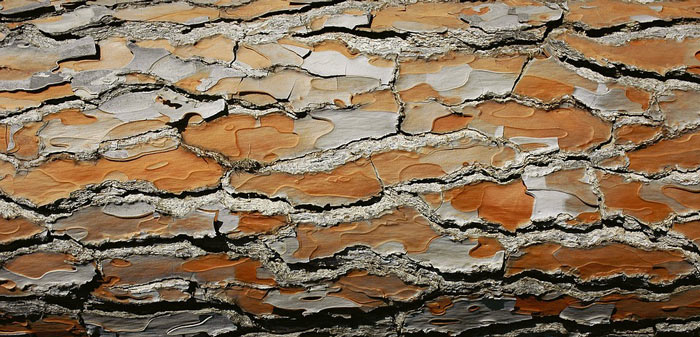The short, gray days of winter in the north, coupled with snow, often create landscapes that resemble a black and white photo. Winter landscapes need not be drab and dreary and can have color, by choosing plants for interesting bark.
One of my favorite shrubs for its bright red stems is the Red-osier dogwood (Cornus sericea). For even better color than the species, look for the cultivars (cultivated varieties) ‘Cardinal’. ‘Arctic Fire’, and my favorite—Baton Rouge. ‘Flaviramea’ is a common yellow-stemmed cultivar of this species, but it is not as colorful nor as resistant to stem cankers as the Tatarian dogwood ‘Bud’s Yellow’ (Cornus alba). For a combination of colors, try the less common Bloodtwig dogwood (C. sanguinea) ‘Midwinter Fire’ with its bright yellow-orange stems topped with red.
Whatever the selection you choose of the bright-stemmed dogwoods, the color may be greener in summer, turning bright in winter, then back to more green next spring. The color is brightest on year-old stems, so the key to keeping good color is pruning back the oldest stems each spring so new ones will develop that growing season. Shrub dogwoods are hardy, and quite vigorous given full sun (but can tolerate some shade), and can be pruned to within a few inches of the ground to renew overgrown bushes. They are adaptable to many soils, tolerating wet ones, and even drought once established. I like to use their stems in holiday arrangements.
The coral bark willow cultivar ‘Britzensis’ (Salix alba) rivals the shrub dogwoods for stem color, its year-old stems being red-orange in winter. It, too, is quite hardy and adaptable as are the shrub dogwoods. Although it can grow into a large tree, cut it back each spring to keep into a shorter mound.
For plants with the added benefit of summer fruit, some of the brambles have stems with color. In my garden, the arching silvery red stems of a ‘Bristol’ black raspberry contrast nicely with the dark red upright stems of a ‘Darrow’ blackberry. For a similar stem effect to ‘Bristol’, consider the Redleaf rose (Rosa glauca) with its waxy purple stems.
Green is a color that is lacking in northern winter landscapes, except for evergreen plants, but for a deciduous shrub consider the Japanese kerria (Kerria japonica). Hardy to USDA zone 5 (-20 to -10 degrees F) and perhaps a bit colder, this old-fashioned shrub has arching stems and a rounded form. It has bright yellow flowers in spring, yellow fall leaves, and bright green stems (yellow with green stripes on the less common cultivar ‘Kin Kan’).
In addition to bark color, some woody plants have attractive peeling (“exfoliating”) bark. Most familiar of such plants is the River birch (Betula nigra) with its tan to pink peeling bark at a young age. The best choice and commonly found cultivar of River birch is ‘Heritage’. The Himalayan (B. utilis var. jacquemontii) and white birches (B. papyrifera) have white peeling bark. A good choice for the latter, resistant to the common bronze birch borer, is Prairie Dream.
If you like lilacs, consider the Peking lilac (Syringa pekinensis) and its cultivar ‘China Snow’ with glossy, coppery bark that peels in strips. Flowers are in mid-June, a creamy white more similar to the tree lilac than the common lilac.
Slower growing than birch or the Peking lilac, and hardy to USDA zone 5, is the Paperbark Maple (Acer griseum). This choice landscape plant makes a small tree, with cinnamon peeling papery bark in winter. As the peeling effect can vary with the plant, choose ones at your local nursery with the best bark. Look for the cultivar Gingerbread whose leaves turn bright red in fall, and is faster growing than the species.
Species of Stewartia with peeling bark that is mottled brown, gold and gray include the Korean (Stewartia korena) and the Japanese (S. pseudocamellia). As the name of the latter indicates, the white summer flowers resemble camellias. Another bonus on these is the red to orange fall leaf color. If you live in USDA zone 5 or warmer, consider these.
For a more unusual large shrub or small tree, look for the Seven Sons flower (Heptacodium miconioides). A relatively recent introduction from China, this choice plant can be seen in mass at the Chinese garden at the Montreal Botanical Gardens. The small, fragrant white flowers bloom in September. The bark peels in long, vertical strips to create a tan and brown effect. Seven Sons are hardy into USDA zone 4b (-20 to -25 degrees F).
Bark on some small trees may not peel but is still quite attractive. A couple of my favorites are cherries– the paperbark (Prunus serrula) and the Amur chokecherry (P. maackii). They are relatively fast growing, with glossy cinnamon bark. The latter is often short-lived due to weak branch structure or girdling roots, but one I had lasted over 20 years. I had it (and now its replacement of the same) planted in our front yard where we can see its beautiful bark, and where the birds can land on their way to our feeders. It has amazed me how many holes in the bark it can withstand due to woodpeckers and sapsuckers!
The European hornbeam (Carpinus betulus) has gray, muscle-like bark and is hardy to zone 4. Related to the bright-stemmed dogwoods, but less hardy (zone 5) is the kousa dogwood (Cornus kousa). Its bark is a patchwork of gray, tan, brown, and orange.
Look for these and other shrubs and trees with an attractive bark when adding plants to your landscape. They’ll provide interest long after flowers and leaves are done with their show.
Dr. Leonard Perry, Horticulture Professor Emeritus
University of Vermont
